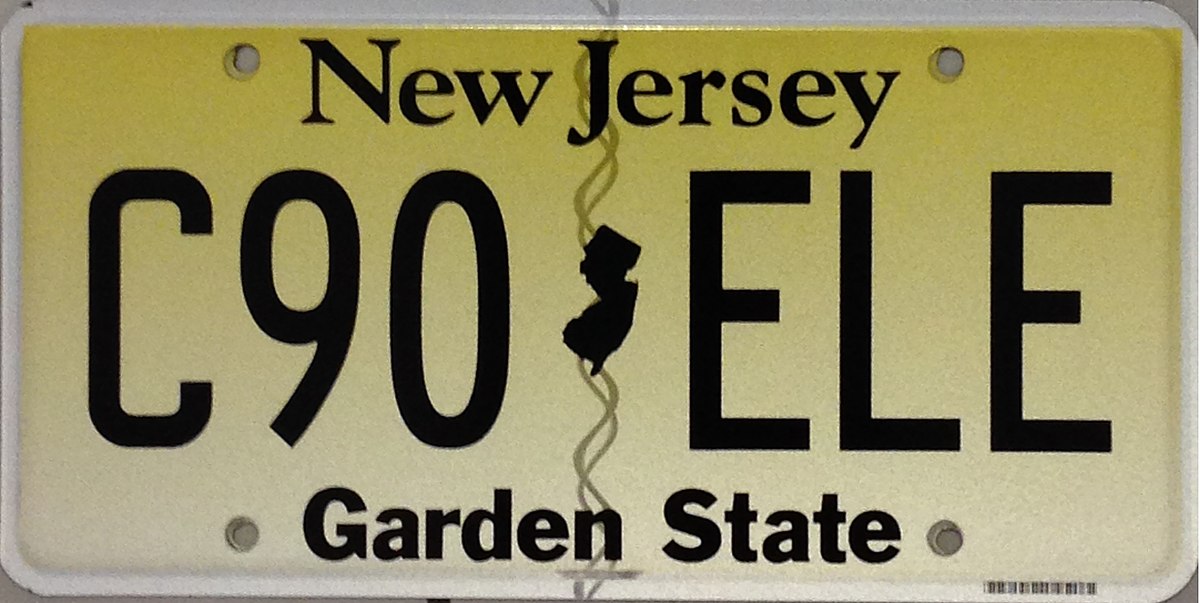Types of NJ License Plates

Nj license plate – New Jersey issues various types of license plates to cater to different vehicle categories and purposes. These include standard, personalized, specialty, and temporary plates.
The standard license plate is white with blue lettering and displays the state name “New Jersey” at the top. It features a random combination of numbers and letters. Personalized plates allow vehicle owners to create custom combinations of letters and numbers within specific guidelines.
The New Jersey license plate, a symbol of the Garden State, can be customized to reflect your interests or affiliations. But did you know that Pennsylvania also offers a wide variety of special license plates, including ones that support specific causes or organizations?
From environmental conservation to animal welfare, there’s a pa special license plate for every passion. And while New Jersey may not have as many options as its neighbor, the plates available here are just as meaningful and can help you show your support for the things you care about.
Specialty License Plates
Specialty license plates are available for various causes, organizations, and interests. They typically feature unique designs and logos related to the supported cause or group. Some popular specialty plates include:
- American Legion
- Breast Cancer Awareness
- Collegiate Alumni
- Disabled Veteran
- Environmental Protection
To obtain a specialty license plate, applicants must meet specific eligibility requirements, such as providing proof of affiliation with the organization or cause represented by the plate.
To find more information about the nj license plate, visit this helpful website nj license plate to learn more about the nj license plate and its history.
Temporary License Plates
Temporary license plates are issued for a limited period and are typically used for newly purchased vehicles or vehicles undergoing registration changes. They are usually made of paper or cardboard and display a temporary registration number. Temporary plates are valid for a specified duration, after which the vehicle owner must obtain permanent license plates.
Design and Features of NJ License Plates

New Jersey license plates are designed to be distinctive and easily recognizable, featuring a combination of colors, fonts, and symbols that convey the state’s identity and heritage.
The standard passenger license plate in New Jersey is rectangular, measuring 6 inches tall and 12 inches wide. It features a white background with blue lettering and a blue bar at the top. The plate displays the state name “NEW JERSEY” in blue letters at the top, followed by a six-character alphanumeric combination.
Colors and Symbolism
The blue color used on New Jersey license plates represents the Atlantic Ocean, which borders the state’s eastern coastline. The white background symbolizes the state’s sandy beaches and the purity of its intentions.
Variations and Changes
Over the years, New Jersey has issued various specialty license plates with unique designs and colors to commemorate special events, organizations, or causes. These plates often feature images or symbols related to the theme they represent.
For example, the “Jersey Shore” license plate features a beach scene with the words “JERSEY SHORE” written in a wave-like font. The “Garden State” license plate showcases a green leaf and the words “GARDEN STATE” to highlight New Jersey’s agricultural heritage.
Legal Requirements and Regulations for NJ License Plates
In New Jersey, displaying license plates is not just a formality but a legal requirement. These plates serve as a crucial means of vehicle identification and play a vital role in law enforcement and traffic management. To ensure compliance, specific regulations govern the placement, visibility, and illumination of license plates.
Failure to adhere to these regulations can result in penalties, including fines and potential vehicle impoundment. Understanding the legal requirements and regulations surrounding license plates is essential for responsible vehicle ownership in New Jersey.
Placement and Visibility, Nj license plate
License plates must be securely attached to the front and rear of the vehicle in designated locations. The front plate should be mounted in a horizontal position, while the rear plate can be either horizontal or vertical. Both plates must be clearly visible and unobstructed from all angles.
Illumination
License plates must be illuminated at night to ensure visibility. This is achieved through the use of either built-in lighting or external lighting devices. The illumination must be sufficient to make the plate numbers and letters easily readable from a distance of 50 feet.
Replacement of License Plates
In case of loss or damage, it is the responsibility of the vehicle owner to obtain replacement license plates promptly. The process typically involves visiting a local Motor Vehicle Commission (MVC) office and providing proof of ownership and identity.
Penalties for Violations
Violating license plate regulations can lead to penalties, including fines and potential vehicle impoundment. Common violations include displaying expired or illegible plates, failing to properly illuminate plates at night, and obstructing the visibility of plates.